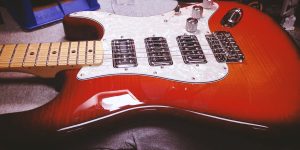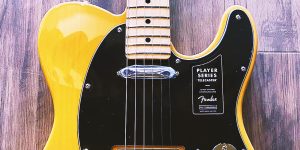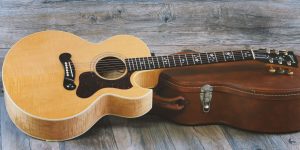The bridge on a guitar is the part of the instrument that helps to support the strings and transfers the vibrations from the strings to the guitar’s body. It vibrates and transmits the sound to the guitar’s body when the strings are plucked.
It is typically made of metal or other hard material and is attached to the guitar’s body using screws, nails, or glue. This component plays an essential role in the overall sound and tone of the guitar and can be one of the most expensive parts of the instrument to replace if it becomes damaged.
What are the types of the bridges?
You can find four main guitar bridge types, including fixed, floating, tremolo, and stoptail. Each type has its advantages and disadvantages, so it’s essential to choose the right one for your needs.
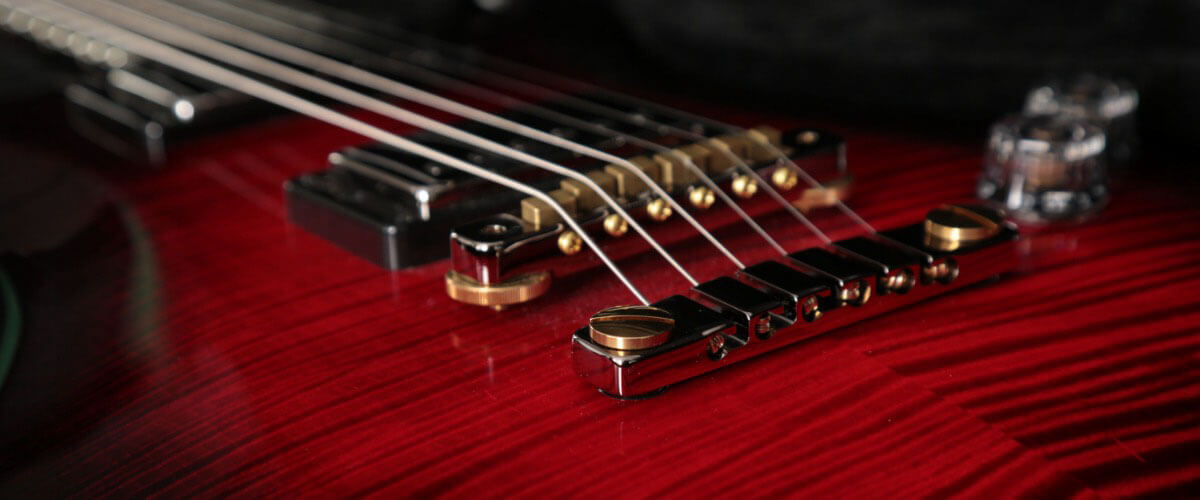
A fixed guitar bridge
It is a type of bridge that is attached to the guitar body with screws or bolts, as opposed to being held on by strings. It makes it more stable than a floating bridge, but it also means that it is not as adjustable. You can typically find it on cheaper guitars, as they are less expensive to manufacture. Many players prefer floating bridges for excellent stability and adjustability, but fixed bridges can still produce a great tone.
A floating guitar bridge
This type of bridge is not fixed to the body of the guitar. Instead, the bridge is supported by strings, which means that it can be raised or lowered. It allows the player to adjust the action of the guitar, as well as the intonation. By raising or lowering the bridge, the player can adjust the length of the strings. As a result it changes the pitch of the notes played. Floating bridges are often used on archtop guitars and electric guitars.
A tremolo guitar bridge
It is a type of bridge that is commonly used on electric guitars. This type of bridge gives a chance to create a vibrato effect by rapidly moving the bridge back and forth. It can be done manually or with the use of a whammy bar. Tremolo bridges are sometimes also referred to as vibrato bridges or vibrato tailpieces.
A stoptail guitar bridge
A stoptail guitar bridge is a type of guitar bridge that helps to anchor the strings at the rear of the guitar. This type of bridge is found on many electric guitars, particularly those with a tremolo system. The stoptail bridge provides more stability than a tremolo bridge and can help to keep your guitar in tune more easily. Many guitarists prefer the stoptail bridge for its stability and ease of use.
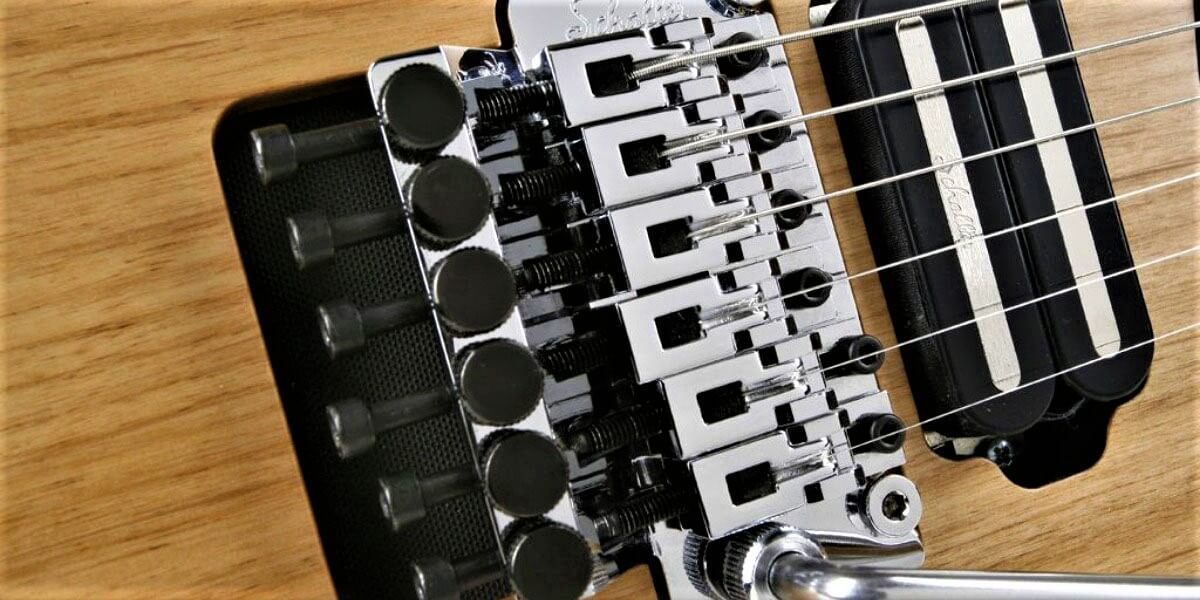
Fixed vs floating guitar bridge
Each type of bridge has its advantages and disadvantages.
Fixed bridges are much more common on acoustic guitars than on electric guitars. It is because fixed bridges provide excellent string stability and are very easy to intonate (adjust the length of the string so that it plays in tune up and down the neck). It also makes them a popular choice for heavier styles of music. That being said, many beginners find fixed bridges easier to use since they’re more stable and require less maintenance than floating bridges. However, one downside of fixed bridges is that they make it challenging to change your guitar’s string gauge or tuning.
Therefore, a floating bridge is better if you want to experiment with different strings or tunings. Floating guitar bridges are much more common on electric guitars than acoustic ones. They are also common on archtop guitars.
Professional guitarists usually choose floating guitar bridges. It is because a floating bridge provides a wider range of motion than a fixed bridge, allowing the guitarist to create a wider variety of sounds. Additionally, a floating bridge is less likely to buzz or rattle when the guitar is played, providing a more consistent tone. Besides, it can be easily removed and replaced if it becomes damaged. It makes it an ideal choice for touring guitarists who need to be able to quickly and easily replace their bridges. However, they can be harder to keep in tune than fixed bridges.
The strings are free to move around more, and they’re also more likely to come into contact with the bridge when you’re playing (which can cause them to go out of tune). In any case don’t forget also to pay attention to your guitar saddle. You can find not only one type of guitar saddle and it’s essential to choose the best one for you.
We are supported by our audience. When you purchase through links on our site, we may earn an affiliate commission at no extra cost to you.
Our newsletter
* We will never send you spam or share your email with third parties

